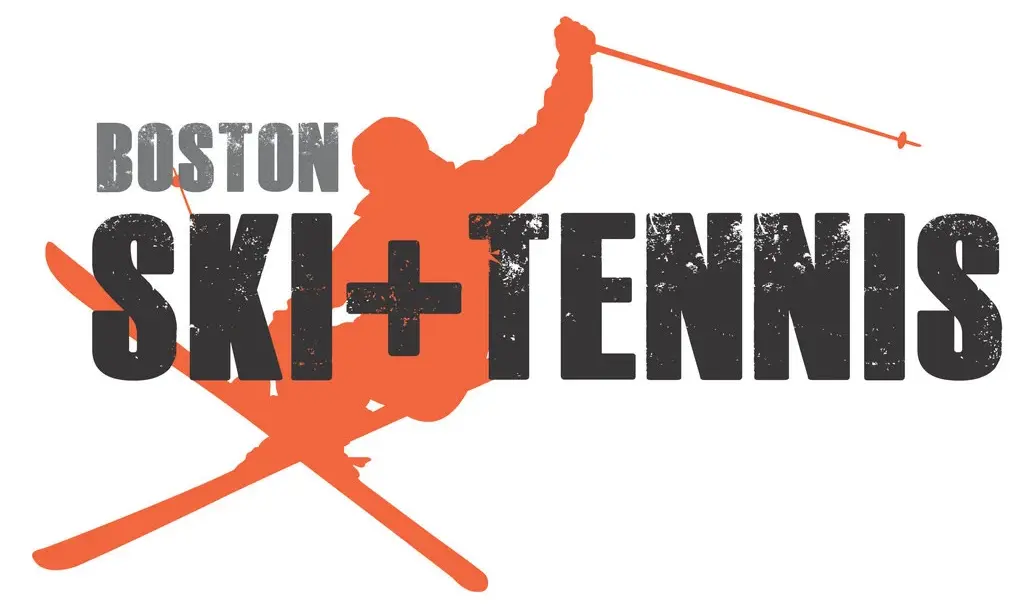The Ultimate Beginner Ski Gear Guide to Choosing the Right Gears
Skiing is a beloved winter activity enjoyed by people of all ages around the world as it offers exhilarating experiences in the midst of breathtaking snowy landscapes. That is why our team at Boston Ski + Tennis compiled this beginner ski gear guide to help you navigate the intricacies of skiing.
For novice skiers, meticulously choosing ski equipment is essential for both safety and enjoyment on the slopes. The right equipment can enhance stability, control, and comfort, ultimately facilitating a positive learning experience and paving the way for progression in the sport.
Beginner Ski Gear Guide to Understanding Ski Gear Components
Skis

When it comes to skiing, choosing the right skis is essential for an enjoyable experience on the slopes. You should note that longer skis offer more stability and floatation in deep snow, while shorter skis are more maneuverable and easier to control.
The width of skis highly affects their performance on different types of snow. Wider skis provide better floatation in powder, while narrower skis offer quicker edge-to-edge transitions on groomed runs. Skis with a narrower waist and deeper sidecut are better for carving turns, while skis with a wider waist and less sidecut are more suitable for powder skiing.
Types of Skis:
- All-Mountain Skis: Versatile and suitable for various terrain types, including groomed runs, moguls, and light powder.
- Carving Skis: Designed for making precise turns on hard-packed snow, ideal for skiers who enjoy speed and agility.
- Powder Skis: Wider and more buoyant, specifically designed for deep powder snow conditions to provide better floatation and stability.
Ski Boots
Ski boots play a crucial role in connecting the skier to the skis, providing control, support, and comfort. Here’s what you need to know about ski boots:
Flex Ratings and Stiffness Levels:
- Flex ratings indicate the boot’s stiffness, ranging from soft (lower flex) to stiff (higher flex).
- Beginner and intermediate skiers typically benefit from softer boots, offering easier flex and forgiveness.
- Advanced skiers prefer stiffer boots for better power transfer and responsiveness, especially at higher speeds and on challenging terrain.
Poles
Ski poles provide balance, rhythm, and stability while skiing, assisting with turns, propulsion, and maintaining posture. They are typically made from aluminum, carbon fiber, or composite materials, offering varying degrees of durability, stiffness, and weight. Proper pole length corresponds to the skier’s height and skiing style, with longer poles for downhill skiing and shorter poles for cross-country skiing.
Other Ski Gear and Accessories
- Helmet: A helmet is crucial for safety on the slopes, protecting your head from impacts and reducing the risk of head injuries.
- Goggles: Protect your eyes from snow glare, wind, and UV rays with goggles or sunglasses designed for skiing. Look for options with anti-fogging technology and UV protection.
- Ski Gloves: Keep your hands warm and dry with insulated gloves or mittens designed for skiing. Look for waterproof and breathable materials for optimal comfort.
- Base Layers: Stay warm and comfortable with moisture-wicking base layers that help regulate body temperature and keep sweat away from your skin.
- Ski Socks: Invest in moisture-wicking ski socks that provide cushioning and support while minimizing friction to prevent blisters.
- Neck Gaiter or Balaclava: Protect your face and neck from cold temperatures and wind chill with a neck gaiter or balaclava made from breathable and moisture-wicking materials.
Beginner Ski Gear Guide: Factors to Consider When Choosing Ski Gear
1. Skill Level and Skiing Style
For beginners, it’s important to start with gear that makes learning skiing easier and safer. Begin with skis that have a forgiving flex and are not too long, which helps with stability and control as you learn. When picking ski boots, opt for softer flex ones that make it easier to move around and feel comfortable while you’re still getting the hang of things. Bindings with lower DIN settings are important as they release more easily during falls, reducing the risk of injury.
As you progress, think about gear that grows with you. All-mountain skis are a good choice because they work well on different types of terrain, letting you try out various skiing styles. Look for ski boots with adjustable flex settings or replaceable soles so that they can adapt as your skills and preferences change over time.
2. Terrain and Conditions
When choosing skis, it’s important to consider the snow conditions where you’ll be skiing. Pick skis with the right width and shape for the snow you’ll encounter most often. All-mountain skis with a moderate width and versatile design work well in different snow conditions, whether it’s groomed runs or powder. You might also want to think about getting ski wax and tuning kits to adjust your gear based on changing snow conditions, helping you optimize performance.
If you mainly ski on groomed trails (on-piste), go for skis with a narrower waist and shorter length for better grip and responsiveness. But if you’re skiing off-piste in ungroomed terrain, wider skis with a rockered profile can help you float better in deep snow and maneuver more easily.
3. Budget and Value
When it comes to finding the right ski gear, striking a balance between cost and quality is key. Start by setting a budget based on how often you plan to ski, your skill level, and your long-term commitment to the sport. Focus on essential items like skis, boots, and bindings, and allocate more of your budget to these items as they directly impact your performance and safety on the slopes.
While it may be tempting to go for the cheapest options, consider investing in higher-quality gear that offers durability and performance benefits, which could end up saving you money in the long run.
If you ski infrequently, renting gear can be a smart, budget-friendly choice. At Boston Ski + Tennis, we offer a range of rental packages that include boots, helmets, and other essential equipment. Our rental options are carefully maintained to ensure they’re in top condition, so you get the best performance without the high upfront cost. Additionally, we offer seasonal discounts and promotions, making it even more affordable to rent high-quality gear.
Get the Ultimate Beginner Ski Gear Guide from Boston Ski + Tennis!
For the best skiing experience, it’s important to get properly fitted gear and seek advice from experts for ski gear maintenance tips. Visit our ski shop at Boston Ski + Tennis, where our skilled staff can give you a beginner ski gear guide, evaluate your needs, and recommend gear tailored to you.
Take advantage of customization services like heat molding ski boots for added comfort. At Boston Ski + Tennis, we’re here to help you find the perfect gear for your skiing adventures. Visit our store today or check out our online selection for top-quality ski equipment and expert advice. Start your journey to the slopes with confidence and excitement!

